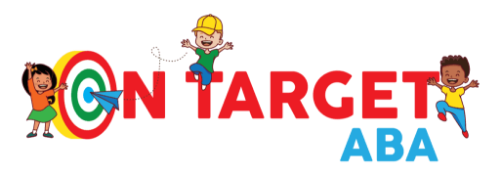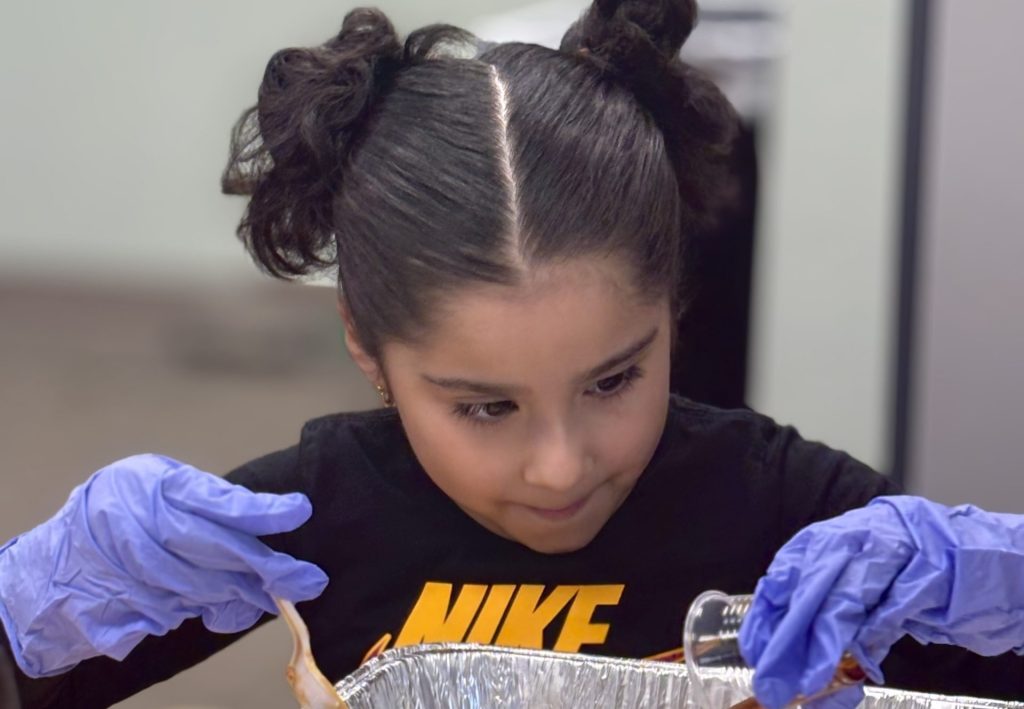🧠 AI Summary:
This blog highlights how On Target ABA’s Autism Scholarship Program (ASP) uses fun, hands-on activities—like making energy balls—to teach important life and learning skills. Through this sensory-rich science project, children practiced fine motor coordination, following directions, teamwork, and sensory exploration while experiencing the joy of learning through play. The post shows how ABA therapy turns everyday moments into opportunities for growth, confidence, and connection, reinforcing that learning can be both structured and joyful.
Introduction
At On Target ABA, we know that some of the best learning happens when kids are having fun. That’s why our Autism Scholarship Program (ASP) combines creativity, play, and evidence-based activities to help children grow.
Recently, our ASP classes rolled up their sleeves for a science activity that was as tasty as it was educational: making homemade energy balls with oats, honey, peanut butter, vanilla, and chocolate chips! This fun and engaging project wasn’t just about creating a snack — it was about building life skills, fine motor skills, and confidence.
Why Hands-On Learning Matters in ABA Therapy
Children with autism thrive when therapy is interactive, engaging, and meaningful. Hands-on learning activities allow kids to:
- Practice following directions step by step.
- Strengthen fine motor skills like scooping, pouring, and rolling.
- Build social skills through turn-taking and teamwork.
- Connect learning with real-world experiences that feel rewarding.
When ABA therapy is paired with fun activities like cooking or crafts, children are more likely to stay engaged, motivated, and proud of their accomplishments.
Inside Our Energy Ball Science Activity
Our ASP kids were so excited to become “mini chefs” for the day. With support from our therapists and teachers, they:
1. Measured ingredients – Oats, honey, peanut butter, vanilla, and chocolate chips.
2. Mixed everything together – Building hand strength and coordination.
3. Rolled their own energy balls – Practicing patience and creativity.
4. Tasted their creations – Celebrating independence and accomplishment.
Each step was an opportunity to practice ABA therapy goals while also enjoying the process. And of course, the smiles and laughter filled the room!
Skills Children Practice During Cooking Activities
Cooking activities like this are more than just fun — they are highly effective tools in ABA therapy. Some of the skills kids developed include:
Fine Motor Skills
Scooping oats, pouring honey, or rolling balls all require control and precision. These actions help strengthen hand muscles needed for writing, dressing, and daily activities.
Social Skills
Working together in groups teaches patience, cooperation, and communication. Kids learned how to wait for a turn, share tools, and celebrate each other’s creations.
Following Directions
The step-by-step process of a recipe is perfect for practicing sequencing and listening skills. Children followed verbal instructions and visual models, improving comprehension.
Sensory Exploration
Sticky peanut butter, smooth honey, and crunchy oats offered a variety of textures. Sensory-rich activities help children become more comfortable with different experiences in a safe setting.
Independence & Confidence
There’s nothing like the pride of creating something from start to finish! Many of our kids beamed with excitement as they showed off their energy balls.
Why the Autism Scholarship Program is Special
Our Autism Scholarship Program (ASP) is designed to provide children with autism access to high-quality ABA therapy in a school-based setting. Through a structured yet nurturing environment, kids receive individualized support for communication, social skills, academics, and behavior management.
What makes ASP unique is the way we blend evidence-based ABA practices with fun, engaging activities. Science experiments, art projects, cooking lessons, and sensory play are all used to help children reach their therapy goals while enjoying their school day.
The Science Behind Energy Balls
While this activity was packed with fun, it also tied into science lessons. Kids learned about:
- States of matter – Sticky, solid, and liquid ingredients combining together.
- Cause and effect – Mixing ingredients leads to a new outcome.
- Nutrition basics – Oats, honey, and peanut butter as sources of energy.
By framing the project as a “science experiment,” children engaged their curiosity and learned how everyday activities connect to real-world concepts.
Family Connection: Try It at Home!
One of the best things about activities like this is that families can recreate them at home. Parents can encourage their children to help in the kitchen, practicing the same skills we focus on in therapy:
- Invite your child to scoop and pour ingredients.
- Model each step clearly and let them copy.
- Encourage your child to describe textures and tastes.
- Celebrate success by enjoying the snack together!
This not only strengthens life skills but also creates meaningful family bonding time.
Why Fun Matters in ABA Therapy
It’s easy to think of therapy as serious work, but fun is a critical part of learning. Children are more motivated when they are enjoying themselves, and positive experiences reinforce skills that stick.
At On Target ABA, we believe therapy should feel like play while still targeting important developmental goals. Activities like making energy balls remind us that laughter, smiles, and creativity belong in every child’s learning journey.
Conclusion
The energy ball activity was more than just a snack — it was a perfect example of how ABA therapy and our Autism Scholarship Program work together to help children learn, grow, and thrive.
From fine motor practice and social skills to science lessons and sensory play, this project highlighted the power of hands-on learning.
At On Target ABA, we’re proud to create opportunities where children can explore, discover, and succeed in ways that feel natural and joyful. Because when learning is fun, progress happens. 💙

